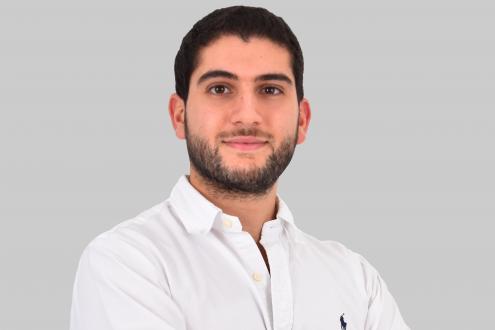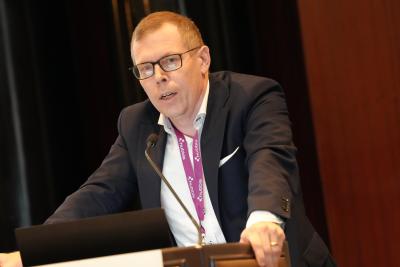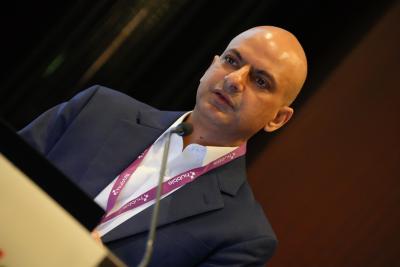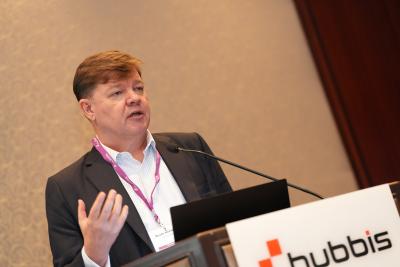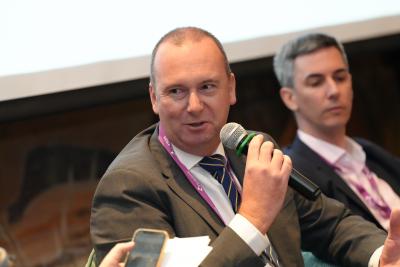Stashaway’s UAE Head on Building a Future-Focused Robo Platform in the Middle East
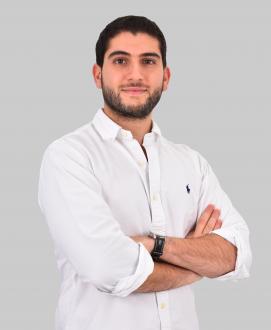
Jan 25, 2023
StashAway, a digital wealth management platform headquartered in Singapore, first launched in 2017 to offer investors diversified portfolios with low cost, no minimums and no lock-in period. Since then, StashAway has raised over USD74 million and expanded regionally to operate in five countries, including Dubai, in November 2020. The digital wealth platform crossed USD1 billion in AUM in Feb 2021. Hubbis recently met with Joseph El Am, General Manager and Senior Executive Officer, StashAway MENA, to learn more about StashAway’s ongoing expansion across the Middle East, the platform’s product expansion plans, and how StashAway is working hard to provide financial education to its customers.
StashAway describes itself as a digital wealth manager and is more commonly known as a Robo-advisor. The business began by providing diversified portfolios with risk levels segmented to the different risk appetites of its customers through a digital-first platform. StashAway has since evolved to offer a more holistic suite of products across diverse types of portfolios, which could include general investing, ESG, thematics, and cash management.
A personalised offering
Clients can invest in a single portfolio, or they can build a set of diversified portfolios that best suit their risk and reward preferences, all with ease of access and at exceptionally low cost. In September last year, StashAway and global asset management group BlackRock announced they would offer a suite of four globally diversified multi-asset model portfolios built from BlackRock’s analytics and ETFs and available to investors via the StashAway app.
Additionally, Stashaway in Singapore raised its sights on the somewhat higher wealth management space in 2022, providing services for Accredited Investors (AI) by facilitating their investments in private equity, venture capital, angel investing, cryptos, and a variety of assets and areas not easily accessible to the mass affluent segment, which from the get-go has been Stashaway’s core market segment.
Building knowledge & awareness
At the same time, Stashaway has been working hard to enhance education around financial planning and investing, as part of its efforts to help democratise financial planning and build the necessary trust to broaden its investor penetration.
Clearly, a by-product of the pandemic was a massive migration to digital enablers that facilitate easy onboarding and ease of investment interface. The firm has boasted, quite fairly, of clients being able to onboard in 15 minutes if they have all the documents ready and being able to onboard and begin investing entirely remotely. The ease of onboarding extends beyond a seamless UI experience, customers can speak to wealth advisors who can guide them through their financial journey.
Low-cost and transparent
StashAway has been capturing market share due to the low-cost management fee structure that is far more affordable than other products in the market. The firm markets itself as having a transparent model, to boost democratisation across the retail and mass affluent segments, where many customers might be new to investing. StashAway also reports that there are no hidden fees or add-ons and no penalties for withdrawals.
There is one simple, straightforward, transparent, and affordable management fee. Those fees vary depending on the product, market and service offered. There is no minimum investment entre level, the highest fee starts at 0.8% for small portfolios and then gradually decreases to 0.2% for anything over one million US dollars.
There is only one simple and straightforward management fee structure. The management fee ranges from 0.2%-0.8% per annum based on the average Assets under Management (AUM) of that month. There is no minimum deposit amount, and the management fee starts at 0.8% p.a. for smaller portfolios, and increases to 0.2% for anything over USD 1 million.
Stashaway is operating in five markets – Singapore, Malaysia, Thailand, Hong Kong and Dubai, and is available through a mobile app or website, so they need little physical infrastructure to expand their range or markets.
Building in the UAE
Joseph explains that it was back in 2020 that the Dubai International Financial Centre (DIFC) visited Singapore and invited Stashaway to consider launching in the UAE. At that time, the firm operated only in Singapore and Malaysia. “We did our research, and saw that over 40% of the region's wealth is held in cash in the banks, roughly twice the level of the US and considerably higher than Singapore,” Joseph reports. “Moreover, the UAE was then attracting more and more wealthy people and families from across the globe, and we saw a rising tide of activity and great hopes for the future in this region.”
The result was that Stashaway launched in the UAE from a base in the DIFC in November 2020, at which time he says there was little or no competition.
Mining money
“There are more entrants now, so we need to keep ahead of the pack in terms of what we offer and how we present ourselves,” he reports. “However, in reality, we do not worry about those apparent direct competitors, as only one or two are genuine robo advisors, most are simply trading platforms. Actually, we see the money still sitting in the banks as the key challenge to overcome and to do so, we need to deliver more education.”
Joseph reports that the journey thus far has seen more customers jump on the Stashaway bandwagon. “We have been building the brand and name recognition out here,” he says.
“Customers like that we provide state-of-the-art investment technology with no barriers to entry. They like that we build personal investment and portfolio recommendations based on certain key information we ask for from the customers and then assign a personalised risk profile based on a variety of metrics and their personal inclinations. Every single risk profile has a pre-constructed portfolio.”
Evolving the proposition
Joseph explains that all investments on the platform are in US dollars, with an extremely painless process for clients to convert UAE Dirhams (AED) to US Dollars (USD) and vice versa. And the platform has adjusted its product suite to attract some of the low hanging fruit – the 40% of investible cash sitting in the banks in the MENA region. “We have some very appealing cash products, such as our money market fund, which was yielding around 3.1% currently in early January and offering a very attractive alternative to just leaving cash at the banks,” he explains.
Safety first
Security is especially important. “Custody is crucial, especially as there have been too many swindles taking place in the UAE in recent years, hence customers are increasingly wary,” Joseph reports. “But we offer the security customers seek and need. We use Saxo Bank as the platform and all the investments that are made with Saxo Bank are then held in a custodian bank, which is Citibank for securities, and HSBC for cash,” he reports.
The result of all these efforts has been a rapid rise in AUM in the region, albeit from a blank slate to begin with. “Most of the over USD1 billion in Stashaway AUM still resides in Singapore and Malaysia, our original markets, but we are making encouraging headway here,” he reports.
Key Priorities
Joseph says his first objective is to boost AUM and key to that, he explains, is spreading financial knowledge amongst potential customers to help draw more of that 40% of the UAE’s private wealth that is actually sitting in cash in the banks, essentially idle.
“Education is key to understanding the value of investment over time,” he says. “Cash in a bank savings account might feel safe but in an era of inflation, its value is eaten away at. That is why we spend a lot of time and effort on education.”
“This includes visiting companies around the country, and providing free courses and seminars about personal finance, how to create a budget, how to start investing, how to plan for retirement, which has gone down well at firms like PwC, Google, Aramex, Deliveroo, Talabat, the DIFC, and others including governmental institutions. We have visited more than one hundred entities so far.”
The third priority is to enhance the product suite. “Providing a well-rounded set of products to the retail investor is a leading priority for us, and all these priorities are closely connected as we strive to enhance understanding around building portfolios and planning for the future.”
A coordinated effort
Joseph closes the conversation by reiterating that the combination of seamless and cost-effective access, an expanding and highly relevant product suite, robust security, improving education and awareness on financial matters, and the improving brand name recognition are all combining to help propel the platform forward. “We have far more to achieve, and the potential is enormous,” he says. “But we are both on track and highly optimistic.”
Getting Personal
Joseph comes originally from Byblos in Lebanon, which he says is reportedly the oldest ‘living’ city in the world.
He was educated there under the French educational system and then attended the Lebanese American University, completing his Bachelor of Science and Business Administration, majoring in banking and finance.
He then worked for PwC, and later Temenos, and in November 2020 moved to StashAway as the Deputy General Manager, rising to become general manager in June 2022.
Joseph is still but enjoys traveling with his girlfriend and reports he has visited fifty-two countries to date. He loves sports, playing basketball and badminton, and also enjoys settling down to an intense game of chess, mostly ‘virtually’ on his phone these days. Otherwise, his life in Dubai revolves like most expats around beaches, shopping malls and nice restaurants and eateries

General Manager MENA at StashAway
More from Joseph El Am, StashAway
Latest Articles


